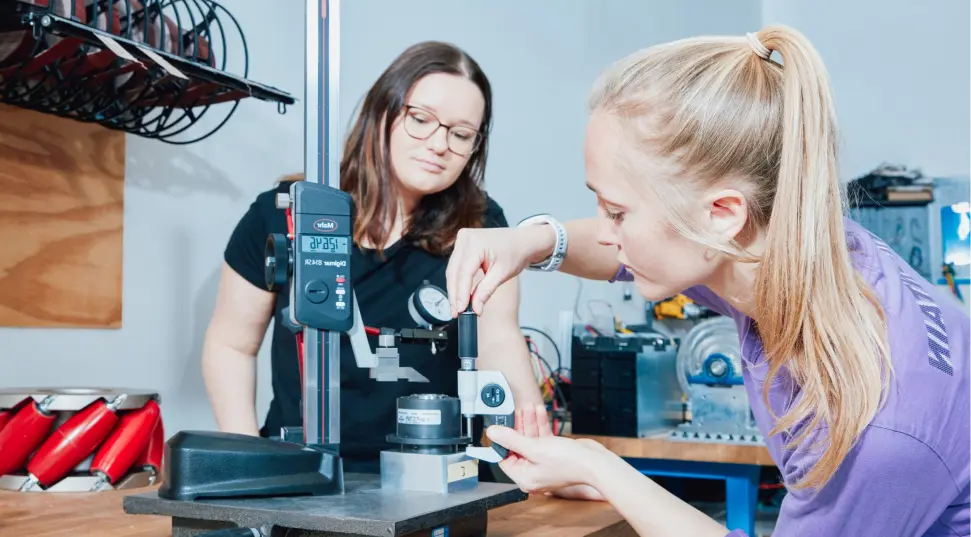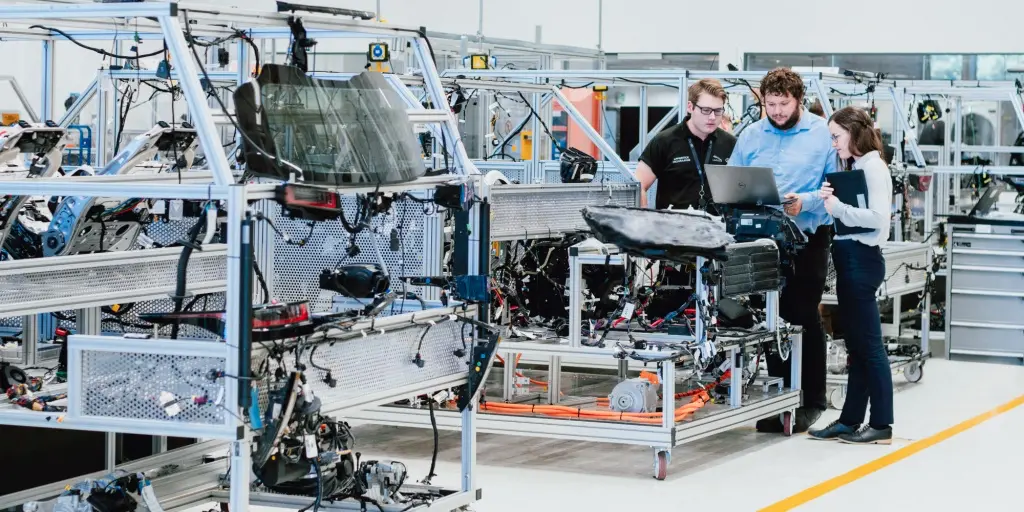Product people think in terms of solution and problem spaces. A “problem space” is a set of customer problems that can be solved by technologies, tools, or methods in the “solution space”. This is important for the subject at hand.
“Deep tech” is often used by startups and investors to differentiate products from the world of “simple” apps or digitization products. Beyond that, the definition you get depends on who you ask. However, a few aspects are always present in defining a “deep tech” product: having a technological “breakthrough” and needing significant investment and time to materialize.
That makes “deep tech” a term of the “solution space”. Any good product person would tell you, often even lecture you, that the “problem space” is way more important for a product. In deep tech, the problem space is just as deep* as the solution space. For entrepreneurs and investors, the depth of the problem space offers challenges and opportunities just as significant as the depth of the solution space.
In Deep Tech the Problem Space Is Opaque
Remember the proverbial garage successful entrepreneurs launch their companies in? That won’t work* in deep tech.

With many B2C and B2B SaaS products launched in “garages”, the problem space is pretty known. Everyone knew how difficult it was to find information online, buy books online, stream your favorite show on-demand, or annoy your friends en masse with a picture of your avocado toast. The trick was to find the right solutions in the solution space. [Even the innovations that created a demand rather than responded to them (the automobile, the iPhone) addressed a need or problem, albeit at a more fundamental level than articulated at the time.]
In deep tech, which is often B2B, it is difficult to find the exact problem from the outside. Take the space of computer chips for example. It is challenging for entrepreneurs (and investors) on the outside to understand the problems of car makers, plane makers, or manufacturers in that space. Sure there are fundamentals, megatrends, and reports. But the difference between a megatrend and a specific problem in deep tech is huge. The megatrend is chip shortage, but what does that mean? Will companies want more suppliers or want to produce their own chips? Design their own chips? Do they lack the production capacity or the design skill to do so? Is it maybe an inventory problem?
With deep tech products being customization-heavy, it is often difficult to know whether that first customer proves a product-market fit, or whether the product is a one-trick pony.
Different companies will define the problem differently. Entrepreneurs and investors would have to have direct exposure to the company to understand that definition.
Getting the Timing Right Is Infamously Difficult in Deep Tech
…especially in early-stage deep tech. It isn’t enough to have the right technology and know the problem. To be able to assess whether the timing is right or not, entrepreneurs need to know whether the product is compatible with the strategies of different customers in the market, what are the alternative approaches to the problem, and what the business case is likely to be for the customers.
It is essential to keep in mind, that the competition isn’t necessary a company that is working in the same technological space. It is often a company that is solving the problem with a completely different approach, possibly even non-tech. Finding that company depends on knowing how the problem is being internally defined by the customers. All of this is hard to know from the outside, especially given it is B2B.

Take Sony’s Glasstron in 1996: a head-mounted display and headphones. If only they called it the metaverse.
Therefore, coming up with a deep tech idea (solution + problem) often requires the entrepreneurs to have privileged access to the problem space. The same goes for their investors too when it comes to evaluating potential deals.
With funding, good startups will find their first customer around the seed phase. With deep tech products being customization-heavy, it is often difficult to know whether that first customer proves a product-market fit, or whether the product is a one-trick pony.
Killing the One-Trick Pony
Deep tech startups don’t need a lot of customers. At series A / series B, a good deep tech startup can have 3–5 main customers, provided they generate a significant annual recurrent revenue.
Moving from 1 to 3+ customers between seed and series A is solid proof of initial product-market fit. That is pretty challenging in deep tech. People working in that field report that it takes ~ 3 months to identify the right person within a big company and convince them. It takes 6~9 further months to get the needed certifications, do requirements engineering, negotiate contracts and deploy the product. (Many corporates are working on getting closer to startups by shortening that sales cycle)
Therefore, to close 3 of these customers between seed and series A (18–36 months generally), the startup will have to put in a monstrous effort. This becomes a bigger stretch considering that these customers are rarely geographically close to each other.
For entrepreneurs and investors, the depth of the problem space offers challenges and opportunities just as significant as the depth of the solution space.
To summarize: for early-stage deep tech entrepreneurs (and investors), the keys to success are to:
- Have access to the problem space to find the first customer (for investors: to evaluate the deal).
- Move from 1 to 3+ customers to prove a product-market fit, (for investors: have a network of such customers to be able to evaluate product-market-fit)
Finding all these problems requires a different environment from the typical startup environment. Germany has a good shot at it.
A Diverse Old Economy Is a Great Entry Into the Problem Space
Germany is known for its diverse “hidden champions” and giant corporates. These companies tend to be leaders in their respective markets. It is quite remarkable how diverse these companies are and how densely they populate Germany. To take Munich as an example: in a 50km radius around it, you can find the HQs of internationally leading companies in car marking, aeronautics, manufacturing equipment, health care, insurance, food, construction equipment, etc. Moreover, these companies are heavily modernizing and investing in R&D. They are acutely aware of the disruption of their markets and of the fact that technology is their best, and sometimes only shot,at keeping their position in the market.
All of this makes them a perfect entry into deep tech’s problem space. In Germany, our computer chip entrepreneur would be within driving distance of dozens of companies leading different international markets that would be open for collaboration. That would allow them to find and understand the right problem to work on, to understand the dynamics of the business case of customers, and to find the first 3–5 customers.
[…]investing in early-stage deep tech can be challenging for traditional VCs. If anything, this is a testimony to how well the teams behind successful deep tech VCs have done.
With a lot of German companies leading their markets, they define the “gold standard” internationally in their industry. That means if our entrepreneur comes up with a chip product good enough for them, it would probably be good enough for the international markets.
In short, Germany could be a great place for an early-stage deep tech startup to be in. But…
…How Can an Early-Stage Deep Tech Investor Make Use of This Environment?
Given all of the above, early-stage deep tech investing can be tricky. In addition to the usual tasks an investor has, early-stage deep tech investors should:
- Get the timing right
- Finding real product-market fit (and not the one-trick ponies)
- Helping the company make the jump from 1 to 3+ customers by Series A.
These tasks are not always compatible with the structure of early-stage VCs. Deep tech is fragmented: a deep tech area can be very different from another (as opposed to marketplaces or B2B SaaS for example). Therefore, “getting the timing right” requires deep insight into very different verticals. This is challenging for a typically sized VC team and would require a quite extensive “advisor network” that would have to be involved deeper than advisors normally do.
Finding real product-market fit and supporting the “jump from 1ot 3+ customers” require deeperand more formal relations with the industry compared to what investors normally do.
This is not to say that there aren’t any successful early-stage deep tech VCs out there. The points above argue that investing in early-stage deep tech can be challenging for traditional VCs. If anything, this is a testimony to how well the teams behind successful deep tech VCs have done.
But is there a structure more suited to the specific challenges of early-stage deep tech investment? At Spacewalk, we think we have found one.
A Deep Tech VC With Its Own R&D Company
In 2013, we founded Motius R&D to tackle rapid technological change. We observed that new technologies were popping up frequently and that companies could not systematically keep up. We concluded that the tech market needs a company that keeps up with all relevant emerging tech and uses it to develop new products or solve problems with the market.
The challenge was to find a way to always stay close to emerging tech. That is how we came up with the “fluid structure”: Motius R&D consists of a pool of 900 talents combined with a core of ~ 120. The idea is that the pool would change every 2–3 years and with that keep exposure to emerging tech. That worked out. Motius R&D has been working in robotics, autonomous driving, AI, insurance tech, AR/VR, light electric vehicles, and other areas with companies like BMW, Siemens, Microsoft, Intel, Allianz, etc.
Last month, we launched our own VC fund Spacewalk. Motius R&D offers Spacewalk several durable competitive advantages in early-stage deep tech investment:
- A market foresight of 18–24 months given the insights into technological research and into the market
- Proof of product-market fit for early-stage tech (translates into deal-flow de-risking)
- A distribution network to renowned customers
The combination of Motius R&D and Spacewalk could solve a lot of the problems of early-stage deep tech investing. Collaborating with other VCs specialized in later stages of investment, we aim to create an ecosystem where deep tech companies flourish beyond just early-stage.
What About the “Deep Technology” in Deep Tech?
Now that we established that the “deep” is also for “deep problems”, what about the “deep technology” in deep tech?
There are a lot of very exciting and potentially world-changing technologies that are still pretty far away from any product-market fit. The question of how to invest in these technologies is an interesting one. There is a debate to be had here: Should a 10-year-running VC invest in technology more than 10 years away from product-market fit? Should we scrap the 10-year running period of a VC and turn all early-stage VCs into evergreens? Or should we rely on the government and universities to fund this instead?
In Spacewalk, we are able to leverage Motius R&D to solve this. If we stumble upon a technology that is promising but still far away from product-market fit, we would keep that within the safe environment of Motius R&D being further developed in co-research projects with the industry leaders until we deem it fit enough to make the jump to 1 customer and then to 3+. But that is surely not the only model.
Not every deep tech should be a deep tech startup.












